#original sri chakra
Text
#Premium Quality Shree Yantra#Benifit Premium Quality Shree Yantra#Buy Premium Quality Shree Yantra online#shri shri yantra#srí yantra#yantra shree yantra#yantra shri#shree yantra price#original sri chakra#original sri yantra
0 notes
Text
Everything You Need to Know About Crystals: Moonstone (White)
Moonstone (The Sacred Stone of the Moon)
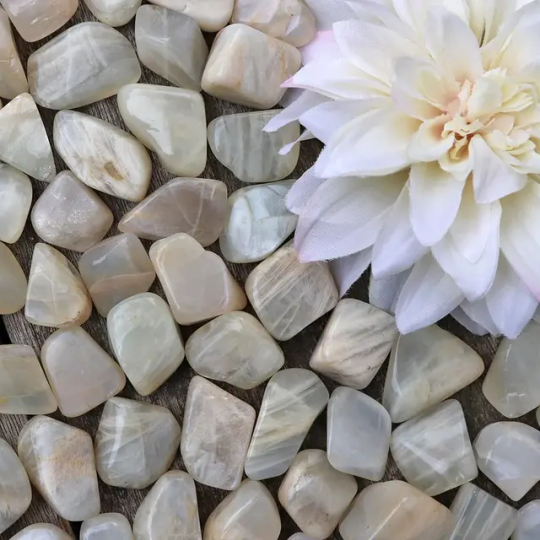
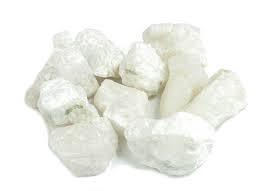

Color: White, cream, yellow, blue, green
Rarity: Easy to obtain
Hardiness: 6.5
Type: Oligoclase/ Feldspar
Chakra Association: Brow, Heart, Root, Third Eye, Sacral, Solar Plexus
Deities: All Lunar Deities, Diana, Selene, Artemis, Isis, Chandra
Birthstone: June
Astrological Signs: Cancer
Element: Water
Planet: Moon
Origin: Australia, India, Myanmar, Sri Lanka, USA
Powers: Femininity, Calmness, Balance, Luck, Intuition, Healing, Sensual, Patience, Reproductive Health
Crystals It Works Well With: Aquamarine, garnet, pearl
How It is Created: Moonstone is a type of feldspar composed of potassium aluminum silicate. It can be found in a number of colors, but all examples demonstrate a particular sheen known as labradorescence; an effect also found in labradorite and blue moonstone. Labradorescence is a light effect caused by parallel hairlike structures laid down within the crystal matrix, which reflect light back and forth, creating different-colored effects, including blue, yellow, silvery gray, and white.
History: Moonstone is the sacred stone of India. During the earliest traditions, the gem was said to have been embedded in the forehead of Ganesh, the four-handed god of the moon, since the beginning of time. It was written in Hindu mythology that moonstone is made from moonbeams, thus its luster.
The magnificent gem is never displayed outside for sale unless placed on a yellow cloth, as yellow is a sacred color. According to other legends, Moonstone can give gifts of prophecy and clairvoyance to the wearer. It could also clear the mind for the wearer to welcome wisdom. But to unlock this ability, Moonstone must be placed in their mouths during the full moon. Since ancient Egypt it is considered as a spiritual stone as it is seen as the gem of protection for night travelers.
Since Moonstone looks a lot like the moonshine, ancient Romans believed that it was formed from moonlight. If you look at the gem closely, you’ll see a dance of light that lurks on the insides of the gem. Ancient Greeks merged the names of the goddess of love (Aphrodite) and the goddess of the moon (Selene) and christened Moonstone as “Aphroselene”. While the Romans believed that the gem exhibits the image of their moon goddess, Diana.
It is also known as an aphrodisiac and when worn by two people, they will fall passionately in love when the moon is high. Moonstone was once called the “Travelers Stone” as it is said to protect those who travel at night, especially at sea.
What It Can Do:
When worn, can attract true love and arouse passion
If you give your lover a moonstone during the full moon, there will be passion between you always
Can settle disagreements and return things to peaceful status
Sewn into garments can enhance fertility
Wearing moonstone protects sensitive emotions
Enhances divination, prophetic dreams and prevents nightmares
Great for meditation and scrying
Represents yin and attracts peaceful energy
Protects travelers at night and by sea
Considered good luck
Balances male-female energies and aids men who want to get in touch with their feminine side
Affects the female reproductive cycle and alleviates menstrual-related diseases and tensions
Helps with digestive and reproductive systems, assimilates nutrients, eliminates toxins and fluid retention, and alleviates degenerative conditions of the skin, hair, eyes and fleshy organs such as the liver and pancreas.
How to Get the Best Out Of: Wear as a ring or place on the appropriate body part, would recommend the forehead, for spiritual experiences, and solar plexus or heart for emotions. Women may need to remove Moonstone at full moon.
How to Cleanse and Charge: Moonstone is relatively soft stone, 6 on the Mohs scale, so it should be handled with care as it can be easily scratched or crushed. Moonstone should be stored separate from other jewelry in its own soft bag or lined box and should not be worn while performing strenuous tasks that could result in it getting bumped or scratched. It can be cleaned with plain water and a soft cloth. If it gets scratched, take it to a jeweler to have it polished out.
Charge your moonstone in the light of the waxing moon and keep it out of direct sunlight.
Crystal Grid: N/A Couldn't find one that wasn't too complex @_@
Sources
#moonstone#witchblr#witch community#witchcraft#occulltism#paganblr#gemstone#crystal witch#crystals#witchcraft 101#witchcraft resources#geology#lunar#lunar witch#nature#geology rocks#rocks#samhain
330 notes
·
View notes
Text

“In Samadhi, that very deep state of meditation, you are given energy and long-lasting bliss. It carries you higher and higher until your very presence radiates love.”
— Sri Sri Ravi Shankar
Samādhi - Supreme Consciousness
Talon Abraxas
Samādhi is the highest state of consciousness that a human can reach in life. It is the goal of our spiritual journey on earth.
Samādhi is the blissful return to our Divine origin. When the thousand-petalled Lotus of the Sahasrāra Chakra opens and the Jīvātmā dissolves within it, the goal of its long, experience-rich journey is reached, and its lifelong thirst for the “nectar of immortality” (Amrita) is quenched. AMARA TATTVA (or ĀDI TATTVA) is the element of the Sahasrāra Chakra that transforms our consciousness immediately into SAT CHIT ĀNANDA, the eternally true existence and eternally blissful consciousness, when we come into contact with it.
24 notes
·
View notes
Text

☀ Sri Sudarshana Chakra ॐ ☀
"O Sudarshana wheel, most favorite of Acyuta, the Supreme Personality of Godhead, you have thousands of spokes. O master of the material world, destroyer of all weapons, original vision of the Personality of Godhead, I offer my respectful obeisances unto you."~Srimad-Bhagavatam 9.5.4
17 notes
·
View notes
Text
The Meaning of the Symbols: An Exploration of Occult and Cultural Icons
I was studying today, but couldn’t really focus. I keep thinking about the symbols i saw and what their meanings are.
So I have researched it, and this is what i have found.
Inverted Pentagram:
More than just a star, the inverted pentagram, characterized by two points projecting upwards, is often interpreted as a symbol of evil and darkness. This configuration is believed to overturn the proper order of things, symbolizing the triumph of the material over the spiritual.
It also represents the goat of lust, its horns attacking the heavens, mirrored by the two upward points. Encircled, the pentagram becomes a pentacle, which holds central importance in the evocation of spirits within various esoteric traditions. Typically, a ritual involving a pentacle includes a series of conjurations, each increasing in potency.

Celtic Knots:
The Pentagram was made out of Celtic knots, They represent Infinity, eternity and interconnectedness.
Celtic knots are distinguished by their endless, interwoven lines that have no clear start or finish. This continuous loop design symbolizes eternity, eternal life, the nature of the soul or love's enduring bond. The designs vary from simple loops to complex interlacings.

Ouroboros:
The ouroboros is an ancient symbol depicting a serpent or dragon eating its own tail. Originating from ancient Egyptian iconography and later adopted into Greek alchemical symbolism, it represents a range of themes such as cyclicality, self-reflection, renewal, and the eternal nature of the universe.
Ouroboros comes from the Greek words "oura" (tail) and "boros" (eating), meaning "he who eats the tail."
The ouroboros, with its rich and diverse historical lineage and deep symbolic significance, continues to be a powerful and enduring symbol representing the perpetual cycles of life and the universe's inherent complexity and unity.
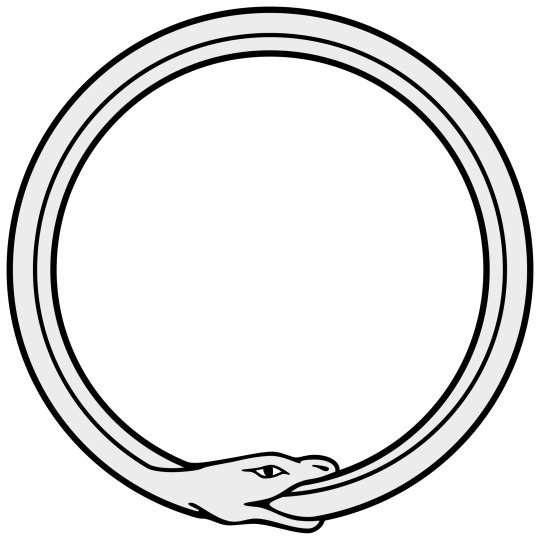
The Ankh:
In the middle of the pentagram was an Ankh. The ankh is one of the most recognizable symbols from ancient Egypt, often referred to as the "key of life" or "cross of life." This symbol resembles a cross with a loop at the top.
The enduring appeal of the ankh lies in its simple yet powerful design, encapsulating essential aspects of Egyptian thought, including the union of opposites, the importance of life and the afterlife, and the interaction between the divine and the mortal.
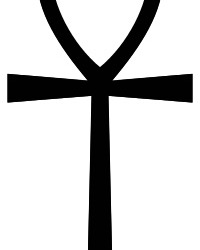
Alchemical Solar Symbol:
The alchemical solar symbol is a classic emblem in alchemical traditions, representing the sun and typically depicted as a circle with a dot in the center.
The symbol is one of the most recognizable across various cultural, spiritual, and alchemical contexts. In alchemy, it holds deep symbolic meanings related to the metal gold, philosophical and spiritual enlightenment, and the concept of perfection.

Sri Yantra:
The Sri Yantra, also known as Sri Chakra, is a complex and ancient symbol used in Hinduism, representing both the cosmic and the spiritual universe.
The design of the Sri Yantra is highly intricate and consists of nine interlocking triangles that surround and radiate out from a central point(bindu). These triangles are formed by the intersection of five downward-pointing triangles, representing Shakti; the female principle, and four upward-pointing triangles, representing Shiva; the male principle. This mix produces a total of 43 smaller triangles in a web symbolic of the entire cosmos or a womb symbolic of creation.
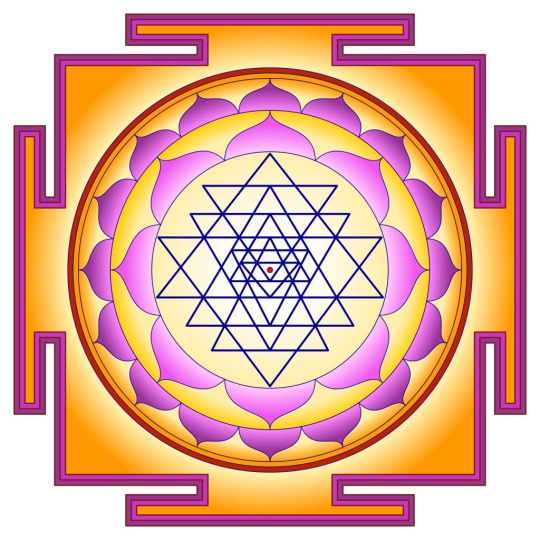
Cross of Saint Peter:
The inverted cross is associated with Saint Peter, one of the apostles of Jesus, who, according to early Christian tradition and writings, was martyred by being crucified upside-down. The inverted cross is often associated with satanism and anti-Christian sentiment in popular culture.
Frequently linked to satanism and anti-Christian sentiment, the inverted cross has been appropriated by those seeking to subvert or defy traditional religious norms. Despite attempts to repurpose it as a symbol of rebellion, its origins remain rooted in Christian tradition and symbolism, serving as a haunting reminder of the darker aspects of faith and martyrdom.

Sigil of Lucifer
The Sigil of Lucifer, also known as the Seal of Satan, is a symbol used predominantly in the occult to represent Lucifer. For Luciferians and satanists, the sigil holds more spiritually significant connotations. It is seen as a symbol of the quest for true knowledge, enlightenment, personal power, and the embrace of self-determination.
The Sigil of Lucifer is a complex symbol with historical roots in grimoires and magical texts, enriched by its use in various modern spiritual contexts. It stands as a representation of knowledge, enlightenment, and the metaphysical journey.
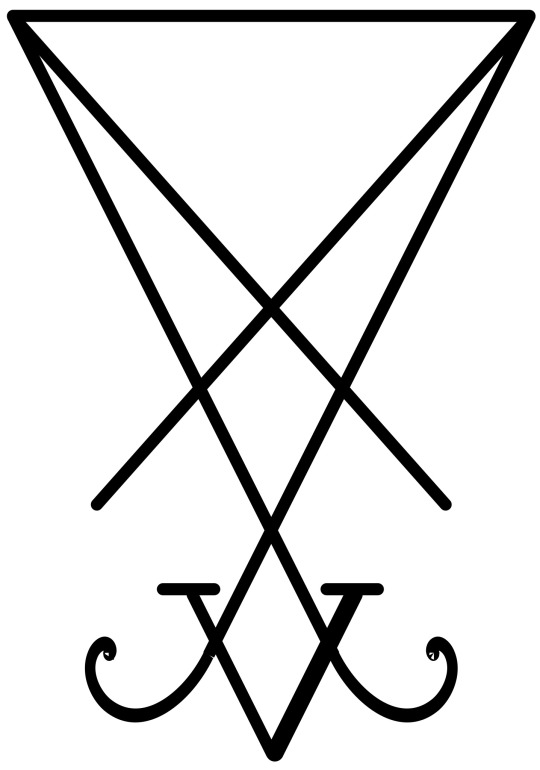
I’itoi
The I'itoi symbol, often associated with the Tohono O'odham deity I'itoi, is known as the "Man in the Maze." This emblem is a significant cultural symbol for the Tohono O'odham people and other indigenous groups in the American Southwest. The symbol depicts a labyrinth with a man positioned at the entrance, poised to navigate through its complex paths.
The I'itoi symbol, with its deep cultural roots and profound symbolism, continues to be a powerful representation of the human experience, resonating with diverse groups and individuals seeking meaning in the labyrinth of life.
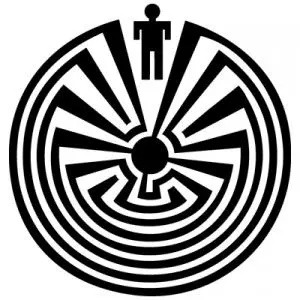
Conclusion:
The eclectic amalgamation of symbols used in the described ritual—spanning from Christian, Egyptian, Hindu, alchemical, to indigenous origins—suggests a complex layering of meanings and intentions. The inversion of the pentagram, traditionally a symbol of spiritual dominance over material elements, points instead towards the alchemical sun, hinting at an esoteric focus on material perfection and enlightenment.
This syncretism could be intended to harness the collective powers and associations of these symbols, thereby amplifying the ritual's effectiveness or tailoring it to specific metaphysical outcomes. The presence of both unifying symbols like the Ouroboros and the inverted pentagram invites a reflection on the nature of the forces being invoked. Potentially balancing creation with destruction, order with chaos.
Speculating on the creators and their motivations, one might see this as an attempt by a modern-day esoteric group to bridge various mystical traditions, possibly seeking a universal language of mystical and spiritual symbolism. Alternatively, it could represent a more personal or localized spiritual practice, reflecting the individual creator’s journey through different spiritual landscapes.
Such a ritual underscores the enduring human fascination with the mystical and the arcane, prompting further inquiry into how and why disparate cultural elements are woven together in contemporary spiritual practices. It also invites us to reflect on the broader implications of such syncretism in the context of global cultural interactions and the evolving nature of belief systems in the modern world.
By delving into these symbols and their juxtapositions, we not only uncover layers of meaning in the ritual itself but also engage with the broader dialogue about the role of ancient symbols in modern spirituality. Further exploration into other symbols and rituals might reveal additional insights into the ways spiritual practices continue to evolve and adapt in a continuously interconnecting world.
#symbols#occult#occultism#witchcraft#witches#magick#pentagram#ominous#strange#esoteric#ritual#clandestine#oddities#weirdcore#symbolic
3 notes
·
View notes
Text
Ruby Fuchsite: History, Origins, and Cultural Significance
Ruby Fuchsite is a captivating and vibrant gemstone that combines the fiery passion of ruby with the soothing calmness of fuchsite, creating a stone of unique beauty and powerful metaphysical properties. This gemstone has fascinated humanity for centuries, with its striking appearance and the mystical qualities attributed to it. In this article, we will delve into the history, origins, and cultural significance of Ruby Fuchsite, exploring its formation, uses, and symbolism throughout the ages.

The Origins and Formation of Ruby Fuchsite
Ruby Fuchsite is a composite stone made up of two minerals: ruby and fuchsite. Ruby is a variety of corundum, a hard and durable mineral that is highly prized as a gemstone. It is known for its deep red color, which is caused by the presence of chromium. Fuchsite, on the other hand, is a variety of muscovite, a type of mica that is typically green in color due to the presence of chromium and vanadium.
Geological Formation
Ruby Fuchsite forms when these two minerals come into contact during metamorphic processes, which occur deep within the Earth’s crust under conditions of high temperature and pressure. The ruby crystals are embedded within the fuchsite matrix, creating a striking contrast between the red of the ruby and the green of the fuchsite. The combination of these two minerals is rare, and the resulting gemstone is highly sought after by collectors and gem enthusiasts alike.
Primary Locations
Ruby Fuchsite is primarily found in India, particularly in the southern regions of Karnataka and Tamil Nadu. These areas are known for their rich deposits of ruby, as well as other valuable gemstones. The unique geological conditions in these regions have allowed for the formation of Ruby Fuchsite, making them some of the most important sources of this gemstone in the world.
Historical Background of Ruby Fuchsite
Ancient Recognition
The history of Ruby Fuchsite dates back thousands of years, with early references to ruby being found in ancient Sanskrit texts. Ruby has been revered for its beauty and rarity since ancient times, with early civilizations in India, Myanmar (formerly Burma), and Sri Lanka all valuing the gemstone. While fuchsite itself was not as well-known in ancient times, the combination of ruby and fuchsite was recognized for its unique appearance and was often used in decorative arts and jewelry.
Medieval and Renaissance Europe
During the medieval period, rubies were highly valued in Europe and were believed to possess protective and healing properties. They were often set in religious artifacts and royal regalia, symbolizing wealth, power, and divine favor. Fuchsite, with its green color, was associated with nature and healing. Although the specific combination of Ruby Fuchsite was not widely recognized at this time, the individual components were both appreciated for their beauty and symbolic significance.
Modern Appreciation
In modern times, Ruby Fuchsite has gained popularity among gemstone enthusiasts and collectors. The stone’s unique combination of colors and its metaphysical properties have made it a favorite in crystal healing and alternative medicine practices. It is also used in jewelry, often in cabochon form, where its striking appearance can be fully appreciated. The stone’s rarity and the complexity of its formation have also contributed to its value and desirability in the gemstone market.
Cultural Significance and Symbolism of Ruby Fuchsite
Ruby Fuchsite is not just a beautiful gemstone; it also carries deep symbolic meanings and has been associated with various cultural beliefs and practices.
Ruby: The Stone of Passion and Protection
Ruby has long been associated with love, passion, and protection. In many cultures, it is believed to stimulate the heart chakra, promoting love, passion, and a zest for life. The intense red color of ruby has also led to its association with fire and blood, symbolizing vitality, courage, and strength. In ancient India, rubies were known as the “king of precious stones” and were believed to protect their owners from harm and bring them success and prosperity.
Fuchsite: The Stone of Healing and Compassion
Fuchsite, with its green color, is often associated with nature, healing, and compassion. It is believed to have soothing properties, helping to calm the mind and body and promote emotional balance. In crystal healing practices, fuchsite is used to amplify the energy of other stones, making it a powerful tool for healing and spiritual growth. The stone is also associated with the heart chakra, promoting feelings of love, empathy, and forgiveness.
Ruby Fuchsite: The Harmonious Union
When these two stones combine to form Ruby Fuchsite, the result is a powerful gemstone that embodies the energies of both ruby and fuchsite. Ruby Fuchsite is believed to balance the emotional and physical aspects of the self, promoting harmony and well-being. It is often used in meditation and energy healing practices to help align the heart chakra and promote emotional healing.
In many cultures, Ruby Fuchsite is seen as a stone of transformation and renewal. It is believed to help its wearer overcome obstacles, release old patterns, and embrace new beginnings. The combination of ruby’s passionate energy and fuchsite’s calming influence creates a powerful synergy that can support personal growth and spiritual development.
Ruby Fuchsite in Jewelry and Decorative Arts
Aesthetic Appeal
The aesthetic appeal of Ruby Fuchsite lies in its striking contrast of colors. The deep red of the ruby stands out against the green background of the fuchsite, creating a visually stunning gemstone. This contrast makes Ruby Fuchsite a popular choice for jewelry, particularly in pieces that showcase the stone’s natural beauty, such as pendants, rings, and earrings.
Cabochons and Carvings
Ruby Fuchsite is often cut into cabochons, which are polished, domed stones that highlight the stone’s colors and patterns. Cabochons are commonly used in rings and pendants, where the stone’s unique appearance can be fully appreciated. In addition to cabochons, Ruby Fuchsite is also used in carvings and decorative objects. Its vibrant colors make it an attractive choice for sculptors and artisans, who use the stone to create intricate designs and patterns.
Healing and Spiritual Jewelry
In addition to its aesthetic appeal, Ruby Fuchsite is also popular in spiritual and healing jewelry. Many people wear Ruby Fuchsite as a talisman or amulet, believing that the stone’s energy can help them overcome challenges, heal emotional wounds, and promote personal growth. The stone is also used in malas and meditation beads, where it is believed to help the wearer connect with their inner self and achieve a sense of peace and balance.
The Role of Ruby Fuchsite in Modern Crystal Healing
Metaphysical Properties
Ruby Fuchsite is widely used in crystal healing practices for its metaphysical properties. It is believed to combine the energies of ruby and fuchsite, creating a stone that promotes emotional healing, balance, and spiritual growth. The stone is often used to open and align the heart chakra, helping individuals connect with their emotions and express their feelings more openly.
Healing Benefits
Ruby Fuchsite is also believed to have physical healing properties. It is said to support the immune system, improve circulation, and promote overall physical well-being. The stone’s calming energy is thought to help reduce stress and anxiety, making it a popular choice for those seeking emotional balance and inner peace.
Practical Applications
In practical applications, Ruby Fuchsite can be used in meditation and energy healing practices. It is often placed on the heart chakra during meditation to promote emotional healing and balance. The stone can also be carried as a talisman or worn as jewelry to keep its healing energy close to the body throughout the day.
Conclusion
Ruby Fuchsite is a gemstone of extraordinary beauty and powerful symbolism. Its unique combination of ruby and fuchsite creates a stone that is not only visually stunning but also rich in cultural significance and metaphysical properties. From its origins deep within the Earth’s crust to its use in jewelry and crystal healing, Ruby Fuchsite has captured the imagination of people throughout history.
Whether you are drawn to Ruby Fuchsite for its aesthetic appeal or its spiritual properties, this gemstone offers a harmonious blend of passion and peace, making it a valuable addition to any collection. Its history, origins, and cultural significance continue to inspire and intrigue, reminding us of the deep connection between the natural world and the human spirit.
0 notes
Text
Discover Tranquility: Harnessing the Power of the Sri Chakra Yantra for Meditation
Immerse yourself in the profound serenity of the Sri Chakra Yantra for meditation, an ancient symbol revered for its ability to foster deep introspection and inner peace. Originating from the sacred traditions of Hinduism, this geometric design represents the cosmos and the divine energy within. By incorporating the Sri Chakra Yantra into your meditation practice, you invite a harmonious balance of mind, body, and spirit.
0 notes
Text
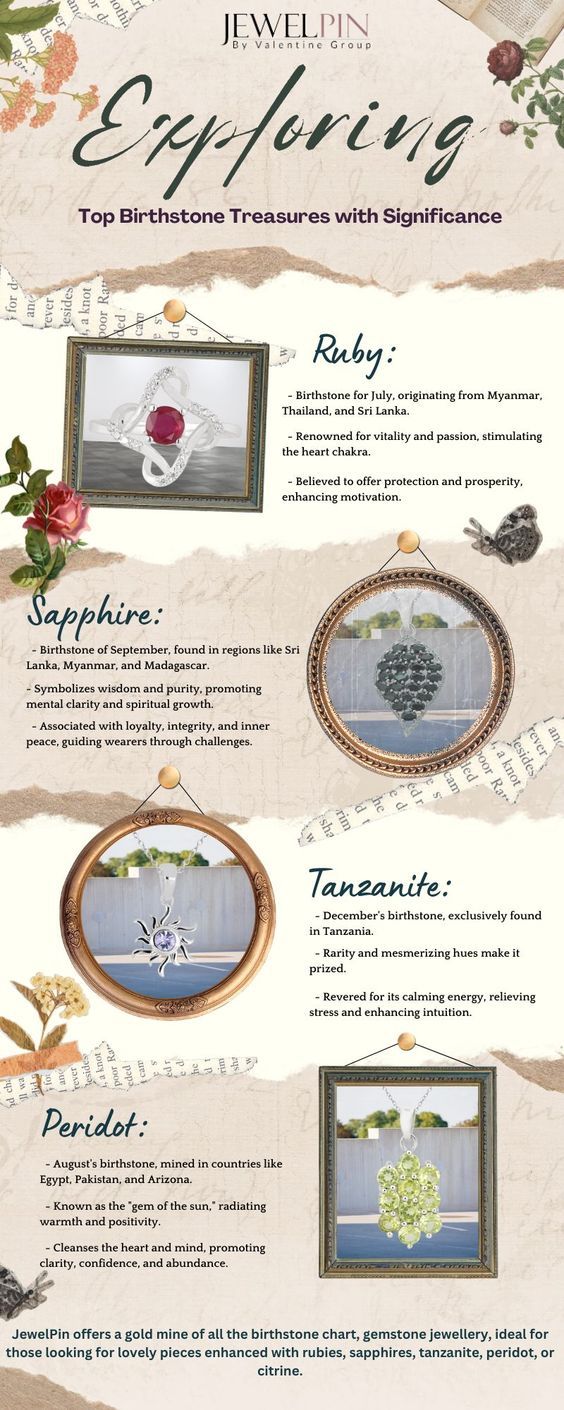
Birthstone Chart: Discovering the Stories and Symbolism Behind Each Gem
Ruby:
- The birthstone for July originated in Myanmar, Thailand, and Sri Lanka.
- Renowned for vitality and passion, stimulating the heart chakra.
- Believed to offer protection and prosperity, enhancing motivation.
Sapphire:
- The birthstone of September was found in regions like Sri Lanka, Myanmar, and Madagascar.
- Symbolizes wisdom and purity, promoting mental clarity and spiritual growth.
- Associated with loyalty, integrity, and inner peace, guiding wearers through challenges.
JewelPin offers a gold mine of birthstone charts and gemstone jewellery, ideal for those looking for lovely pieces enhanced with rubies, sapphires, tanzanite, peridot, or citrine.
#gemstonejewllery#birthstonechart#birthstonejewellery#gemstone#jewellery#wholesalegemstonejewellery#diamondjewellery#customjewellery#diamond#birthgemstone#gemstonejewelry#rubystone#maybirthstone#june birthstone#july birthstone
0 notes
Text
The Ancient Art of Yantras: Exploring Sacred Geometry and Spiritual Symbols

Yantras, meaning "instrument" or "machine" in Sanskrit, are more than just intricate geometric designs. They are powerful tools used in Hinduism, Buddhism, and other Dharmic traditions for meditation, contemplation, and spiritual connection. Rooted in sacred geometry, these visual representations of deities, cosmic principles, and energetic forces hold profound symbolism and offer a path to inner transformation.
The Story Behind Yantras
The exact origins of yantras are shrouded in mystery, but their presence can be traced back to the Indus Valley Civilization (3300-1300 BCE). Early Vedic texts hint at the use of symbolic diagrams, and later Tantric traditions (from 4th-century CE onwards) embraced yantras as a cornerstone of their practices. Yantras were initially created and used by mystics and passed down through lineages with strict secrecy. Over time, specific yantras became associated with different deities, planets, and desired outcomes.
Studying yantras isn't just about art; it's a journey of spiritual growth. Each yantra is a portal to hidden truths about the universe. Those interested in Vedic astrology can find yantras particularly fascinating. They complement the realms of Vedic astrology predictions, readings, and horoscopes by offering deeper insights and enhancing spiritual understanding. Whether you're curious about Vedic astrology or seeking free Vedic predictions for life, incorporating yantras into your study can provide profound benefits.
Structural Elements and Symbolism
Yantras are meticulously crafted, adhering to precise geometric principles. Common elements include:
Circles: Representing completeness, the universe, and the divine feminine.
Triangles: Symbolizing masculine energy, manifestation, and various deities depending on their orientation.
Squares: Denoting stability, the earth element, and material reality.
Lotus Petals: Signifying spiritual awakening, chakras, and the unfolding of consciousness.
Dots (Bindus): Representing the ultimate reality, the source of creation.
Lines and Interlocking Patterns: Creating specific energetic fields and pathways for focusing awareness.
Types Of Yantras
Sri Yantra (Sri Chakra):
Often hailed as the "Queen of Yantras," it embodies the divine feminine and is considered a powerful tool for achieving harmony and enlightenment.
Properties: Balance, manifestation, spiritual growth.
Characteristics: Intricate web of interlocking triangles, concentric circles, and lotus petals.
How to Use: Meditation, puja (worship), worn as an amulet.
Benefits: Deep meditation, spiritual awakening, inner peace.
Historical Background: Deeply rooted in Tantric traditions.
Om Yantra: Representing the sacred syllable "Om," the primordial sound of creation.
Structure: Interlocking triangles Shiva-Shakti, concentric circles existence, lotus petals.
Symbolism: Cosmos, human energy system, balance, enlightenment.
Ganesh Yantra:
Properties: Removing obstacles, attracting good luck, enhancing intellect.
Characteristics: Often features an image of Ganesha, the elephant-headed god, surrounded by geometric shapes.
How to Use: Puja (worship) of Ganesha, meditation for overcoming challenges.
Benefits: Success in endeavors, intellectual growth, removing negativity.
Historical Background: Deeply associated with Ganesha, the remover of obstacles.
Structure: Ganesha image surrounded by geometric shapes.
Symbolism: Ganesha, removing obstacles, good luck, intellect.
Lakshmi Yantra:
Properties: Prosperity, abundance, material success.
Characteristics: Often features a central lotus with eight emerging petals and a central Lakshmi symbol.
How to Use: Puja (worship) of Lakshmi, meditation for attracting wealth.
Benefits: Financial stability, achieving goals, fulfilling desires.
Historical Background: Associated with Lakshmi, the goddess of wealth and prosperity.
Structure: Central lotus with eight petals and Lakshmi symbol.
Symbolism: Lakshmi, prosperity, abundance, material success.
Yantra for Meditation:
Properties: Focus, inner peace, heightened awareness.
Characteristics: Varies, but often features simple geometric patterns conducive to meditation.
How to Use: Solely for meditation practices, focusing on the center of the yantra.
Benefits: Improved concentration, deeper relaxation, mental clarity.
Historical Background: Used by meditators for centuries across various spiritual traditions.
Structure: Simple geometric patterns.
Symbolism: Focus, inner peace, heightened awareness.
Vastu Yantra:
Properties: Balancing energy flow in a space, promoting harmony.
Characteristics: Often features a square grid with specific geometric patterns.
How to Use: Placed in a building or home to rectify Vastu doshas (imbalances).
Benefits: Improved well-being within a space, fostering positive energy flow.
Historical Background: Rooted in the ancient Indian architectural science of Vastu Shastra.
Structure: Square grid with specific geometric patterns.
Symbolism: Balancing energy flow, harmony, and well-being in a space.
Maha Yantras:
Properties: Represent universal cosmic powers, for overall well-being.
Characteristics: Varies depending on the specific Maha Yantra. Some well-known examples include Maha Mrityunjaya Yantra (overcoming obstacles) and Maha Lakshmi Yantra.
How to Use: Meditation, puja (worship), worn as amulets.
Benefits: Spiritual growth, overall well-being, connection to higher consciousness.
Historical Background: Deeply rooted in Tantric traditions, symbolizing powerful cosmic forces.
Structure: Varies Maha Mrityunjaya, Maha Lakshmi etc.
Symbolism: Universal cosmic powers, specific benefits overcoming obstacles, abundance
Using Yantras for Your Spirit Quest
Meditation: Staring at a yantra while meditating helps you focus your mind and get deep into the zone.
Mantra Chanting: Pairing a yantra with a special mantra during meditation makes the experience even more powerful.
Worship (Puja): Yantras are great for bringing extra focus to your prayers and making a stronger connection with the divine.
The Superpowers of Yantras: What They Can Do for You
Inner Peace: They can calm your mind and help you concentrate better.
Spiritual Awakening: Looking into the secrets of yantras can help you understand life's big questions.
Balancing Acts: Some yantras help sort out the different areas of your life, like health, money, and relationships.
Protection and Strength: Certain yantras act like spiritual bodyguards, keeping bad vibes away and bringing in the good stuff.
Conclusion
Yantras, rooted in Hinduism, are more than beautiful designs; they're spiritual tools that help us understand the universe and grow spiritually. For those interested in Vedic astrology, yantras offer deeper insights. They complement Vedic astrology predictions by revealing hidden truths. Yantras also enhance Vedic astrology readings and provide additional layers of meaning to Vedic astrology horoscopes. They are valuable for those seeking free Vedic astrology predictions for life, as they enrich spiritual understanding.
To learn more about yantras, check out the Jaimini Astro website. It offers lots of information, resources, and authentic yantras made with care and precision. By exploring these sacred symbols, you can start your spiritual journey today and uncover the deep wisdom they hold. Using yantras can help you connect more with the universe, understand Vedic astrology better, and gain new spiritual insights.
1 note
·
View note
Text
"The Radiance of Peach Moonstone: Unveiling its Mystique and Healing Aura"
"Embracing Feminine Energies: A Journey with Peach Moonstone"
Peach Moonstone, with its soothing aura, resonates deeply with feminine energies, offering a profound sense of calmness. From ancient times, it has been revered as a tool for purifying and transmuting negative energies, nurturing the emotional well-being of those who embrace its essence.
"An Ancient Healer: Delving into the Depths of Peach Moonstone's Legacy"
As the oldest known stone for natural mental healing therapy, Peach Moonstone carries within it a rich history of holistic healing. Its association with the menstrual cycle, stress, and anxiety alleviates emotional burdens and brightens the spirit, offering solace in times of emotional turbulence.
"Celestial Connections: The Cosmic Symphony of Peach Moonstone"
With its affiliation with the Moon and its profound connection to astrological influences, Peach Moonstone transcends earthly boundaries. It symbolizes divine energies and mystical powers, bringing forth good fortune and aiding in the prediction of future endeavors.
"Journey of Origin: Tracing the Path of Peach Moonstone"
From the mineral-rich landscapes of Brazil to the mystical realms of India and Sri Lanka, Peach Moonstone's journey unfolds across continents. Its rarity and value stem from the depths of these geological wonders, captivating hearts with its ethereal glow.
"Nurturing with Care: Unveiling the Sensitivity of Peach Moonstone"
While Peach Moonstone dazzles with its beauty, it requires delicate handling due to its softness and susceptibility to breakage. Recognizing high-quality stones with vibrant colors and minimal cleavage ensures their suitability for various forms of jewelry, albeit with caution.
"The Healing Touch: Harnessing the Power of Peach Moonstone"
Peach Moonstone emerges as a beacon of healing, fostering emotional balance and inner tranquility. From stimulating the sacral chakra to promoting confidence and love, its energy resonates deeply, guiding individuals towards harmony and self-discovery.
"A Tapestry of Benefits: Unlocking the Virtues of Peach Moonstone"
Beyond its aesthetic allure, Peach Moonstone serves as a catalyst for physical and emotional well-being. From alleviating stress and anxiety to enhancing digestion and menstrual cycles, its holistic properties offer a pathway to serenity and fulfillment.
"An Artwork of Serenity: Embracing the Essence of Peach
Moonstone" In the hands of artisans, Peach Moonstone transforms into a masterpiece, reflecting the profound essence of its healing aura. With each facet, it embodies the harmony of mind, body, and spirit, inviting all who encounter it to bask in its radiant glow.
For More Information Visit Our Site

0 notes
Text

0 notes
Text
Everything You Need to Know About Crystals: Amethyst
Amethyst (“The World’s Most Popular Purple Gem”)
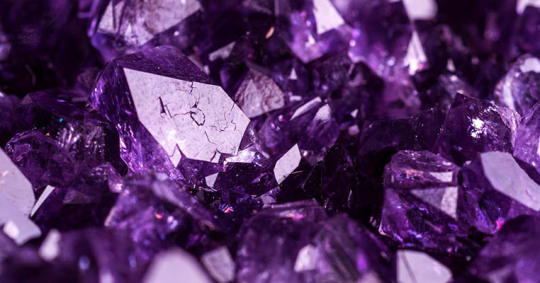

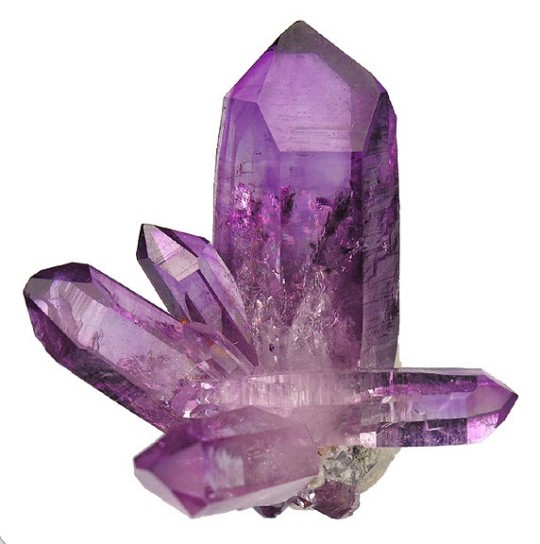

Color: Dark Vivid Purple to Pale Lilac
Hardness: 7
Rarity: Easy to Acquire
Type: Quartz
Chakra Association: Third Eye, Crown
Deities: Buddha, Dionysus, Diana, Artemis
Birthstone: February
Astrological Signs: Pisces, Aries and Aquarius
Element: Air
Planet: Jupiter
Origin: USA, Britain, Canada, Brazil, Mexico, Russia, Sri Lanka, Uruguay, East Africa, Siberia, India
Powers: Pride, Sobriety, Peace, Spirit World, Protection, Celibacy, Luck, and Homesickness
Crystals It Works Well With: Ametrine, Citrine, and Moonstone
How It Is Created: Amethyst receives its color beginning at the crystal’s growth. At the first stage, trace amounts of iron are incorporated into the crystal as it starts to grow. After the crystallization starts, gamma rays are emitted by radioactive materials within the host rock and the irradiated iron gives the amethyst its beautiful purple color.
History: One of the earliest references to amethyst is in the Old Testament book of Exodus as it is mentioned that one of the stones in the breastplate of Aaron the High Priest was an amethyst. There is not a clear indication to where the name comes from but it is said that it is derived from the Greek word “amethyst” which means “not drunk”. Despite this, it is associated with the god, Dionysus, because the purple hue of the crystal looks like delicious grape wine. Wine goblets were carved of this stone to prevent drunkenness. There is also a Greek lore involving Dionysus with a young girl named Amethyst. The lore reads:
“Dionysus was angry one day and swore that he would exact his revenge on the next mortal that came by. He created several tigers, informed him of their mission and went his way. As it would happen, a lovely young girl named Amethyst was the next to come by, on her way to pay homage to Artemis and was attacked. Artemis quickly changed the girl into a statue of solid quartz. When Dionysus returned to see what he had wrought, he was overcome with remorse and wept tears of purple wine which flowed over the statue, staining it permanently.”
The color was also in demand throughout history since the color purple is associated with royalty and was worn by royals in Egypt and Europe. In some traditions, Catholic Bishops wear amethyst rings to symbolize their piety and celibacy, and rosaries are still fashioned with this stone.
What It Can Do:
Excellent focal point for meditation and scrying
Used to unlock mysteries and figure out spiritual matters, such as death and rebirth
Helps cleanses, purify and heal the body, spirit, and mind
Balances emotions and prevents nightmares
Useful for spells to help let go of addictions
Uses on the tip of wands for healing and can produce high spiritual energy
Brings a sense of calm and clarity
Helps with decision making
Can open your third eye and connect to the crown chakra
Protects the mind from dark magic
A gateway stone to connecting with the spirit world
Helps with transmitting energies to a specific point
How to Get the Best Out of Amethyst: Wearing it on your person with a bracelet or necklace. Putting amethyst on bare skin invites the stone to release its vibrations directly into the body, amplifying its power.
How to Cleanse and Charge Amethyst:
To cleanse: Leave your Amethyst stone placed under the light of the full Moon for a whole night, that is, about 8 hours
To charge: It can also be recharge via the moon so just leaving it in the moonlight can do double duty.
Crystal Grid:
Protection and Cleansing (Hexagram)
Amethyst
Selenite
Snow Quartz
Hold your crystals in your hands and state your intention for the grid.
Lay the first triangle, placing clearing crystals on each point.
Join up the points and spray the grid with clearing essence.
Lay the light-bringing crystals in an overlocking triangle over the top of the first. Join up the points, starting with the first crystal you laid.
Place your keystone in the center, stating your intention once more.
Sources
#amethyst#witchblr#witch community#witchcraft#astrology#occulltism#paganblr#nature#rocks#minerals#quartz#crystal grid#crystals#crystal witch#witchcraft 101#baby witch#dionysus#witches of tumblr#witchcraft resources#witch blog#beginner witch#geology#gemstones
218 notes
·
View notes
Text

The Sudarshan Chakra
Talon Abraxas
The Sudarshan Chakra is regarded as one of the most potent weapons ever used in the celestial world. Sudarshan Chakra is derived from two words – su and darshan. It means auspicious (su) vision (darshan). Sudarshan means Divine Vision. If there is any other weapon that could rival the Sudarshan Chakra, it is Shiva's trident. Chakra is derived from chruhu, which denotes ‘movement’ and kruhu, which indicates ‘to do’.
The Sudarshan Chakra finds mention sometimes in the ancient Hindu Vedic texts of Rigveda, Yajurveda, and the Puranas. It is described as the ultimate weapon that can destroy an enemy - the asuras, rakshasas, and vikrutatma.
In the Dwapara Yuga, Shri Krishna received the Sudarshan Chakra from the Fire God, Agni. Sri Krishna was the eighth avatar of Vishnu. It was the mighty sage Parashurama, said to be the sixth avatar of Vishnu, who taught Sri Krishna to master the weapon.
There are some details about the Sudarshan Chakra about which some of us may not have the complete awareness. This powerful weapon has some incredible features. Listed below are five amazing features of the Sudarshan Chakra.
Five Unbelievable Features of the Sudarshan Chakra
1. The Sudarshan Chakra is considered one of the most powerful weapons ever used in the cosmic world. This divine discus is believed to have 108 notched edges and travels at incredible speed. The Chakra is stated to travel millions of Yojanas (1 Yojana= 8 kilometers) by the time we blink once. The Sudarshan Chakra is said to have millions of spikes in two rows moving in opposite directions that give it a serrated edge.
2. The Sudarshan Chakra is synonymous with Vishnu and sits on his right index finger. The sacred disc is believed to be very auspicious. The movement of the Sudarshan Chakra is such that it does not move by any action, like throwing the disc. The Chakra moves through sheer willpower, the first of its kind that can be controlled or powered by thought alone. The Sudarshan Chakra is said to possess immense spiritual and mystical powers. The sacred wheel is in constant motion, and it is said to have been created by the combined powers of the Trinity of Brahma, Vishnu, and Shiva.
3. The Sudarshan Chakra is powered by the mind and thought. Once it leaves the finger, there is no looking back. The Chakra goes after the enemy and chases them down. It will not return to the owner unless it has completed its task. The Sudarshan Chakra, once it leaves the finger, goes chasing the enemy down relentlessly and destroys them. There is no way to escape from its wrath. The only option is to stop running and surrender to the Chakra. Lord Vishnu, it is believed, comes to the rescue of those who surrender themselves to him.
4. Sri Krishna was in possession of the Sudarshan Chakra in the Dwapara Yuga. He is the eighth avatar of Vishnu and obtained this powerful weapon from the Fire God, Agni. It is believed that the Great Sage Parashurama taught Sri Krishna how to master the Sudarshan Chakra perfectly.
5. Mythology has it that Vishnu did not own the Sudarshan Chakra. The Devas (celestial beings) were being incessantly harassed by the Asuras (demons). The Devas approached Vishnu for help. He, in turn, approached Shiva as he was not sure he had complete power to defeat the asuras. He prayed to Shiva for thousands of years, and finally, Shiva, pleased with Vishnu's devotion, granted him the boon to defeat the Asuras and presented him the Sudarshan Chakra. Vishnu in all his avatars retains the Sudarshan Chakra on his right index finger.
The Sudarshan Chakra is a symbol of power and acts as a shield to destroy and negate any negative or evil forces that can cause suffering. A powerful quality of the Sudarshan Chakra is Papa Nashanam (destruction of sins). While there are many speculations about the origin of Sudarshan Chakra, Sudarshan is none other than Vishnu himself. He is called Sudarshan because he wields the mighty and indestructible Sudarshan Chakra.
46 notes
·
View notes
Text
Top 10 Yoga Teacher Training Courses in
India: A Journey to Mastery!
India is the first place from where yoga originated from; hence, it comes as no surprise that
this is one of the finest countries to go for yoga instructor instruction. India as a country with
an extensive yogic background is filled with experienced teachers through which, students
get a distinct chance to learn.
In India, you must search through various yoga schools and programs to choose the best one
that suits your needs and interests. You can look for questions like what style of yoga is being
taught, how long will the program last for, where is the school located, and how much will
you pay to be trained.
After your selection of an institution, prepare for an engaging transformation. It entails much
more than that by merely acquiring knowledge of how to teach yoga asanas.
It is also on the question of furthering one’s own understanding of yogic philosophy and
lifestyle. The eight limbs of yoga, the chakras and the nadis will be revealed to you. In
addition, you will be taught pranayama (the practice of controlled breath), meditation, and
mantra chanting.
Apart from the theory of yoga practice, your time will be mostly occupied with actual yoga
poses. Be prepared for several hours of asana practice per day. In that regard, your teachers
will make sure that you have positioned yourself correctly for every pose. Also, you will be
taught on how to adjust for individual students’ poses and how to make sequences that are
difficult yet safe.
There is no doubt that yoga teacher training in India is very demanding, but it can be very
fruitful too. By the end of the training, you will have grasped knowledge about
everything that you need to know about yoga and be prepared to teach it to others.
The Best Yoga Teacher Training in India
Yoga originated in India , so it is not surprising that numerous fabulous yoga teacher training
programs are available in the country. Here are a few of the best:
Yoga Chaitanya International Institute: The School is located in Goa and
Dharamshala. They offer different styles of 200-hour yoga training courses. Some of
their famous courses are the Yoga Therapy Training India Course and the 200-Hour
Yin Yoga & Meditation Teacher training course.
Sivananda Yoga Vedanta Dhanwantari Ashram: The ashram in Kerala offers a
conventional yoga teacher training program encompassing various yogic aspects such
as philosophy, anatomy, etc.
Parmarth Niketan: This Yoga ashram situated in Rishikesh, offers many yoga
teacher training courses such as the 200-hour hatha yoga program, the 300-hour
vinyasa yoga program, and the 500-hour yoga teacher training course.
Yoga Vidya Mandiram: This Yoga school offers a 200-hour hatha yoga teacher
training program in Rishikesh they mainly focus on traditional Indian yoga practices.
Himalaya Yoga Valley: This Rishikesh-based yoga school has a hatha yoga program
of 200 hours, a 300-hour program of hatha ashtanga yoga and a 500-hour hatha
ashtanga yoga teacher training program.
Swami Krishnananda Hatha Yoga Vidyapeeth (Inteyoga): Here we have a 200-
hour Hatha Yoga Teacher Training program at this yoga school in Mysore, which is
taught based on Sri Krishnamacharya’s teachings.
Explore the Magic of Yin Yoga Training in India!
In order to reach deeper layers of fascia and quiet the mind, yin yoga incorporates extended
holds in a variety of seated and reclined poses. Yin yoga has three primary principles:
discover your edge, where you can stretch without straining; keep still; and give yourself
permission to stay here for a while, usually for three to five minutes. It is an easy practice that
has significant advantages.
Yin Yoga Teacher Training India Certification Courses are an excellent option if you want
to deepen your practice or become a certified Yin yoga instructor. These programs typically
cover the following:
25 Day 200hr Yin & Meditation Healing - Yin Yoga and Meditation Teacher Training,
Goa
25 Day 200hr Yin & Meditation Healing - Yin Yoga and Meditation Teacher Training,
Dharamshala
26 Day 200hr Yin Healing - Yin Yoga Therapy Teacher Training, Goa
7 Day 50 Hour Yin Yoga Teacher Training in Dharamshala, India
13 Day 100hr Yin Healing - Yin Yoga Therapy Teacher Training, Goa
15 Day 100 Hour Multi style Yoga TTC in Rishikesh, India
100 Hr Vinyasa/Yin Teacher Training in Dharamshala, India
28 Day 200 Hour Traditional Hatha-Vinyasa Yoga TTC, Goa
26 Day 200h 'Yin & Yang in Balance' Teacher Training, Goa, India
Conclusion: If you are serious about becoming a yoga teacher, or if you want to deepen your
understanding of yoga, then becoming a yoga teacher in India is a great option. It is an
affordable and rewarding experience that will leave you with a lifelong appreciation for the
practice of yoga.
0 notes
Text
Zircão e seus significados e propriedades
Cristais de zircão ou pedras de zircônia têm uma energia intensa que é altamente espiritual. Eles ajudarão você a amar a si mesmo e aos outros e a reconhecer os aspectos espirituais de si mesmo. Ele irá trazer a energia espiritual para baixo dos chakras transpessoais superiores através do chakra da coroa, em seguida, movê-lo para todos os chakras inferiores. Se você tem problemas que estão lhe causando sérios transtornos, e precisa tirar-se da situação, ou seja, distanciar suas opiniões e receber orientação do espírito, o zircão te ajudará.
Ele irá aterrar esta energia no chakra da base, em seguida, levar a energia para o chakra da estrela da terra e Mãe Gaia. Embora seja uma pedra espiritual, é também uma pedra forte para te ancorar. Ele funcionará dentro de todos os chakras para estimular o movimento de energia lenta. Eles ajudam você a ser mais organizado e a agir com mais eficácia para fazer o que precisa para alcançar seus objetivos.
Os zircônios são algumas das pedras mais antigas que foram usadas no planeta, e o significado de seu nome remonta a uma antiga palavra persa. Esse nome tornou-se parte das línguas germânicas e, em seguida, foi anglicizado para a palavra inglesa Zircon. Os melhores depósitos de pedras de zircão vêm de Madagascar e do Canadá, mas também foram encontrados no Sri Lanka, na Ucrânia, na Austrália, no Canadá e nos EUA.
A cor dos cristais de zircão varia e pode ser vermelho, laranja, amarelo, verde e marrom, mas muitos deles foram tratados termicamente para obter essas cores. As pedras não tratadas mais comuns são vermelho acastanhado a amarelo acastanhado. As mais belas e preciosas pedras preciosas são geralmente tratadas termicamente. Isso é para criar lindas pedras brilhantes com um intenso brilho ardente. Estes são frequentemente amarelos, verdes, azuis ou podem ser incolores.
Cristais de zircão incorporam uma forte energia de cura e têm uma vibração de aterramento espiritual eficaz. Eles são conhecidos como uma “pedra da virtude”, pois ajudam a equilibrar os aspectos virtuosos dentro de você. Esses cristais são comuns e incomuns ao mesmo tempo. Enquanto eles realmente são pedras muito comuns, nem todas as lojas de cristal os carregam. Isso ocorre porque as pedras que são realmente bonitas são compradas para o comércio de joias, enquanto o resto pode ser ignorado, pois muitos não têm a aparência que algumas pessoas associam com um cristal bonito.
Eles são pedras de chakra para todos os chakras, mas têm um efeito mais forte dentro de alguns chakras específicos. Depois de usar cristais de zircônio de qualquer grau, você apreciará seu forte aspecto espiritual. O tratamento térmico dificulta a determinação da cor original da pedra, mas não deve afetar suas qualidades metafísicas. Depois que todas as pedras são naturalmente aquecidas na Terra ao longo dos milhões de anos que elas levam para se formar. Qualquer cor de zircão pode potencialmente ter um efeito sobre suas habilidades intuitivas, bem como ajudá-lo a desenvolver habilidades psíquicas mais fortes.
Eles podem ajudá-lo a desenvolver sua intuição, bem como estimular seu nível atual de intuição a aumentar. Os chakras que eles mais afetam podem depender, até certo ponto, da cor das pedras reais e se foram tratadas termicamente. Esta é uma excelente pedra para estimular a sua força de propósito, por isso é uma excelente pedra para usar ao fazer uma meditação diária com cristais, especialmente se você deseja alcançar um propósito específico de sua meditação.
Usá-los também pode ajudá-lo a desenvolver suas habilidades intuitivas mais plenamente. A vibração deles também fornece proteção espiritual, então essa é outra razão pela qual você pode escolher meditar com eles. Essas pedras são conhecidas por ajudá-lo a transformar suas visões em realidade.
Para ajudá-lo a descobrir sua capacidade específica de comunicação psíquica mais rapidamente, você pode gostar de usar seus cristais de zircônia na meditação, pois isso pode ajudar no processo. Eles têm uma forte energia de ancoragem espiritual, de modo que eles o ajudarão se você estiver propenso a sair da meditação sentindo-se confuso ou desequilibrado.
Eles são conhecidos como uma pedra de equilíbrio, e isso se refere ao equilíbrio físico, emocional e espiritual. A forte energia espiritual desses cristais ajudará você a amar a si mesmo e aos outros. Eles ajudarão o seu modo de pensar a tornar-se mais puro, e mais de acordo com o coração sentiu sentimentos de compaixão. Isso pode ser porque eles estimulam o timo ou chakra superior do coração. Cristais de zircão irão ajudá-lo a manifestar abundância e prosperidade. Isso pode ser particularmente forte se as pedras que você contém contêm cores douradas ou amarelas dentro delas. É o poder de suas intenções que está envolvido quando você faz isso, então você pode optar por usar qualquer cor de pedras de zircônio para ajudá-lo a se manifestar. Essa vibração é particularmente forte dentro do chakra do plexo solar, onde muitas das pedras amarelas têm uma energia muito forte.
0 notes
Text
శ్రీ లలితా చైతన్య విజ్ఞానము - 485 - 494 - 7 / Sri Lalitha Chaitanya Vijnanam - 490 - 494 - 7

🌹. శ్రీ లలితా చైతన్య విజ్ఞానము - 485 - 494 - 7 / Sri Lalitha Chaitanya Vijnanam - 490 - 494 - 7 🌹
🌻. లలితా సహస్ర నామముల తత్వ విచారణ 🌻
✍️. సద్గురు శ్రీ కంభంపాటి పార్వతీ కుమార్
సేకరణ : ప్రసాద్ భరద్వాజ
🍁. మూల మంత్రము : ఓం ఐం హ్రీం శ్రీం శ్రీమాత్రే నమః 🍁
🍀 100. అనాహతాబ్జ నిలయా, శ్యామాభా, వదనద్వయా ।
దంష్ట్రోజ్జ్వలా, అక్షమాలాధిధరా, రుధిర సంస్థితా ॥ 100 ॥ 🍀
🍀 101. కాళరాత్ర్యాది శక్త్యోఘవృతా, స్నిగ్ధౌదనప్రియా ।
మహావీరేంద్ర వరదా, రాకిణ్యంబా స్వరూపిణీ ॥ 101 ॥ 🍀
🌻 485 నుండి 494వ నామము వరకు వివరణము - 7 🌻
కాళరాత్రి ఆదిగా గల శక్తులు పండ్రెండు సమూహములుగ నుండును. ఈ శక్తులు 'క'కారము మొదలుకొని 'ఈ' కారము వరకు 12 సమూహములుగ నుండును. అవి వరుసగ ఖ గ ఘ ఙ; చ ఛ జ ఝ ఞ; ట ఠ అక్షరములు, ఈ ప్రతి అక్షరమునకు సమూహము లున్నవి. అవియే గుణింతములు, అక్షరము లన్నియూ శక్తులే. విశుద్ధి చక్రమున పదహారు అచ్చులు పదహారు దళముల శక్తులుగా పేర్కొనబడినవి. విశుద్ధి యందు మొదటి పండ్రెండు హల్లులు పేర్కొనబడినవి. ఈ వరుస ననుసరించియే సంస్కృతమున ఇతర అక్షరములను పేర్కొనిరి. తత్కారణముగ సంస్కృత భాష దేవ భాష అయినది. 'క' ఆదిగ గల పండ్రెండు శక్తులతో కూడిన మాత కావున 'కాకినీ' మాత అని కూడ అనాహత మందలి మాతని పిలతురు.
సశేషం...
🌹 🌹 🌹 🌹 🌹
🌹 Sri Lalitha Chaitanya Vijnanam - 485 to 494 - 7 🌹
Contemplation of 1000 Names of Sri Lalitha Devi
✍️ Prasad Bharadwaj
🌻100. Anahatabjanilaya shyamabha vadanadvaya
danshtrojvalakshamaladi dhara rudhira sansdhita॥ 100 ॥ 🌻
🌻101. Kalaratryadishaktyao-ghavruta snigdhao-dana priya
mahavirendra varada rakinyanba svarupini ॥ 101 ॥ 🌻
🌻 Description of Nos. 485 to 494 Names - 7 🌻
Forces with Kalaratri as the primary are of twelve groups. These energies are in 12 groups starting from 'Ka'kara to 'E'kara. They are kha ga gha j; Cha Cha Ja Jha Na; Each of these letters has a group. They are multiples and letters are energies. The sixteen vowels in the Vishuddhi Chakra are said to be the energies of the sixteen petals. The first twelve consonants are mentioned in Vishuddhi. Following this sequence are other letters in Sanskrit. Thus the Sanskrit language is the language of Gods. Mata at Anahata is also known as 'Kakini' Mata because she is a mother with twelve powers having the origin of 'Ka'.
Continues...
🌹 🌹 🌹 🌹 🌹
#prasad bharadwaj#lalitha devi#lalitha chaitanya sahasranama contemplation#శ్రీ లలితా చైతన్య విజ్ఞానము
0 notes